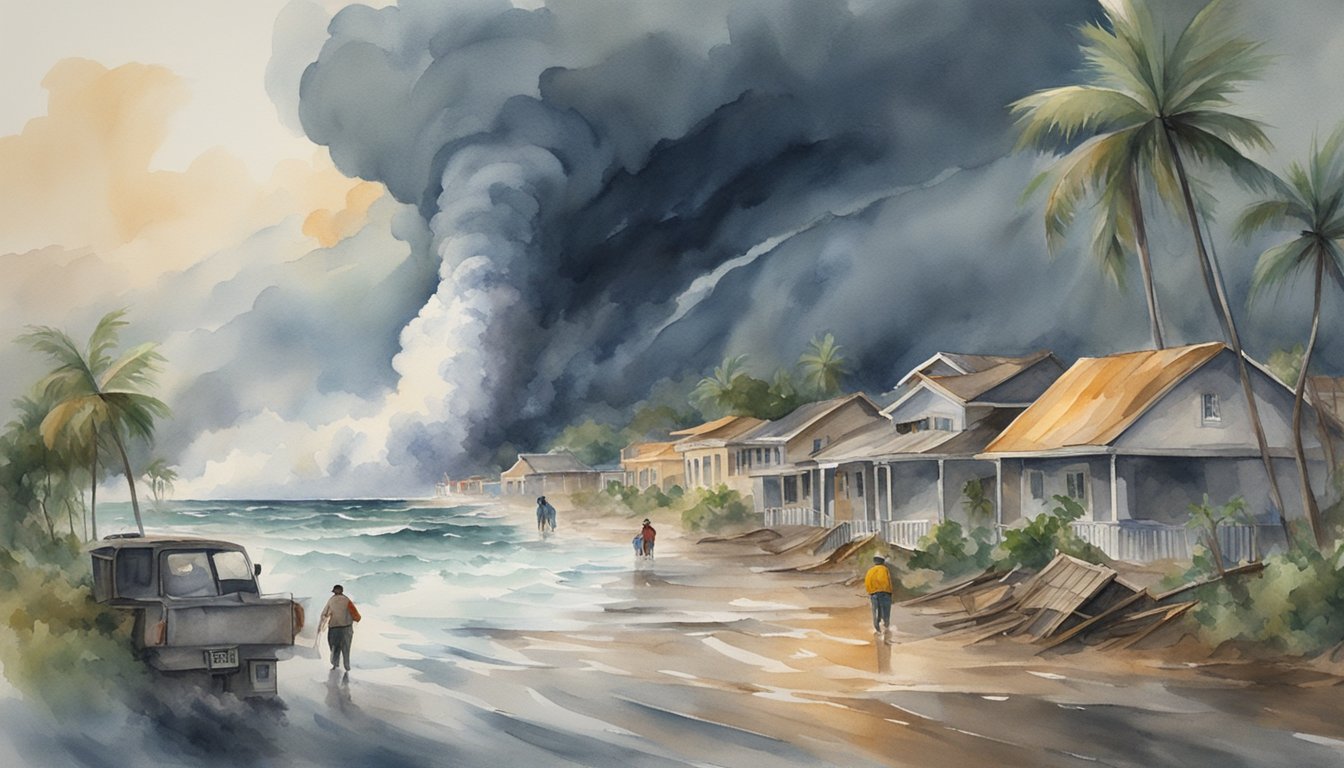Understanding Tropical Cyclones
Tropical cyclones are powerful weather systems characterized by intense winds and heavy rainfall. Understanding their formation, classification, tracking, and the impact of climate change on their behavior is essential for predicting their effects and protecting lives and property.
Formation and Characteristics
Tropical cyclones form over warm sea surface temperatures, typically above 26.5 degrees Celsius (80 degrees Fahrenheit). These systems evolve from a pre-existing weather disturbance, where the warm ocean water acts as an energy source, leading to rising moist air. The disturbance becomes a cyclone when wind speeds reach a certain threshold and the system starts rotating due to the Coriolis effect.
- Key factors: Warm sea surface temperatures, pre-existing disturbance, Coriolis effect
- Wind speed threshold: Tropical storm status at 39 mph, hurricane status at 74 mph
Classification and Terminology
Tropical cyclones have different names depending on their location and intensity. In the Atlantic and Northeast Pacific, they are called hurricanes, whereas in the Northwest Pacific they are known as typhoons. Below hurricane strength, they may be referred to as tropical storms. The Saffir-Simpson Hurricane Wind Scale classifies these systems into five categories based on their maximum sustained wind speeds.
Meteorological Tracking and Predictions
Meteorologists use satellites, radar, and aircraft to track tropical cyclones. These tools help determine the storm’s path, intensity, and potential impact. Predictive models use current data to forecast future behavior, but predicting a cyclone’s intensity remains challenging due to factors such as wind shear, which can strengthen or weaken a storm.
Role of Climate Change
Climate change is increasingly affecting tropical cyclones. Warmer ocean temperatures can supercharge storms, increasing their intensity and potential for damage. Additionally, phenomena like the El Niño pattern can alter cyclone frequency and intensity. Research indicates that while the total number of storms may not rise, the most severe cyclones are becoming more common as a result of global warming.
- Increased intensity: Linked to warmer oceans
- Frequency changes: Influenced by climate phenomena like El Niño
Impact and Response

Tropical cyclones, known for their heavy rainfall and high winds, have profound impacts on affected areas, necessitating meticulous emergency preparedness and invoking significant economic and humanitarian efforts for recovery and aid.
Emergency Preparedness and Safety Measures
Ahead of landfall, it’s crucial for emergency management to issue timely warnings to ensure safety. The National Hurricane Center often releases tracking maps and wind speed probability data to aid in preparation. Schools and ports may close, while residents secure supplies and follow evacuation advisories. The Coast Guard stays on alert for potential rescue operations, especially in high-risk areas like Charleston and Cape Fear.
Economic and Humanitarian Consequences
When a tropical cyclone strikes, the economic toll can be significant, with damages often running into billions. Flash flooding and storm surges devastate infrastructure, halting commerce in cities such as South Carolina and Virginia. Humanitarian consequences include displacement, food shortages, and sometimes, tragically, deaths. Relief efforts by FEMA and other organizations are critical in addressing these issues.
Post-Storm Recovery and Aid
Once the storm has passed, recovery efforts begin immediately with priority given to rescuing individuals stranded by floods or high winds. FEMA works in conjunction with the President and local authorities to provide aid. Australia’s response to Cyclone Biparjoy and the North Carolina response to Atlantic hurricanes both show efforts spanning from clearing debris to rebuilding communities.
Future Outlook and Storm Mitigation Strategies
With the increasing intensity of tropical cyclones, researchers are focusing on storm mitigation strategies. Locations like India and Pakistan, frequently affected by cyclones, are looking into advanced weather warnings and more robust infrastructure to reduce future impact. The National Oceanic and Atmospheric Administration collaborates with national weather services worldwide to fine-tune predictions and prepare for the predicted arrival times of these ever-more-frequent disturbances.

